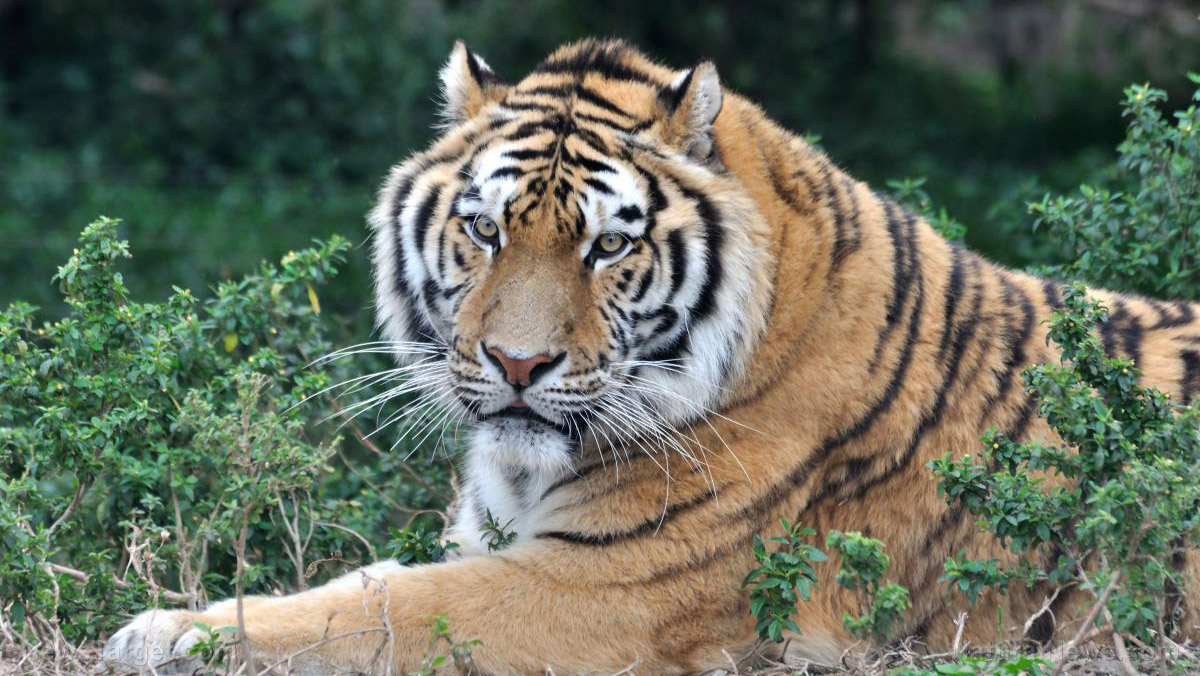Amazing nature: Orange tigers appear green to prey, giving them better camouflage against a natural background
12/14/2019 / By Janine Acero

The animal kingdom has many innovative natural camouflage strategies that humans try to emulate using technology. Camouflage is a crucial part of the predator-prey relationship in the wild; certain markings on animals’ skin or fur help them blend in with their environment, which is usually mottled green and brown due to the surrounding foliage. So what’s the deal with the strikingly orange fur of tigers? What role do their signature markings play in keeping these big cats at the top of the food chain?
Tiger coats look different to a prey’s eyes
As it turns out, the conspicuous orange fur of tigers looks different in the eyes of the prey they’re stalking. Human eyes normally see red, blue and green colors. On the other hand, some prey animals, such as deer, can only see blue and green colors and can’t see red. This is called dichromacy – the inability to differentiate between red and green colors. This means that the tigers’ orange fur looks green to the eyes of their prey, and this makes these predators “disappear” into the forest background.
Researchers from the University of Bristol, led by Dr. John Fennell, used computer simulations to discover how the big cats look like to their prey and to estimate how detectable a given animal is. They used images of the environment in which the animal lived, then generated images to see how the camouflage helped the animal blend in.
By simulating how the environment may look like to animals with dichromatic color vision, the researchers identified the “optimum colors for concealment and visibility.”
“Consider the coat of a tiger (Felis tigris); it has fur that appears orange to a trichromat observer rather than some shade of green, though the latter should be more appropriate camouflage for an ambush hunter in forests,” said Fennell. “However, as illustrated, when viewed as a dichromat, the tiger’s colour is very effective.”
To determine how this mechanism works on human eyes, the researchers tested out their theory by screening images in which a red object was inserted in two backdrops: one was a temperate forest with images of Leigh Woods in North Somerset; the other was in semi-arid conditions with an image of the Tabernas Desert in Almeria, Spain.
They measured how quickly the participants detected the sphere against each backdrop in images reproduced to simulate three-color vision and two-color vision. In both scenarios, the participants were much quicker to identify the images with three colors.
Tigers can’t grow green coats
If orange coats look green to dichromatic animals, you may wonder why tigers didn’t evolve to have green fur for camouflage. The orange color in a tiger’s coat is produced by a chemical called pheomelanin. To produce a green coat would “require a significant change to mammalian biochemistry,” explained Fennell. Simply put, mammals cannot produce green fur. (No, a sloth’s fur only looks green because of algae growing on it.)
So that leaves another question: Why didn’t deer evolve to have trichromatic vision to better detect their predators? The researchers look to wartime claims that colorblind individuals were better at spotting camouflaged enemies than those with normal color vision. Fennell states that this is yet to be simulated in a laboratory setting to prove or disprove. He insists that trichromatic vision is generally more effective for “breaking camouflage.”
The Bristol study did not consider the role of the tigers’ stripes in completing their camouflage. The black stripes break up a tiger’s silhouette, further tricking onlookers regardless of what type of vision they have.
Read more about surprising findings on animal characteristics, behavior and more at Discoveries.news.
Sources include:
Tagged Under: animal kingdom, animals, breakthrough, camouflage, cool science, discoveries, Ecology, hunting, predators, research, scientific, tigers, weird science, wildlife
RECENT NEWS & ARTICLES
COPYRIGHT © 2017 SCIENTIFIC NEWS




















